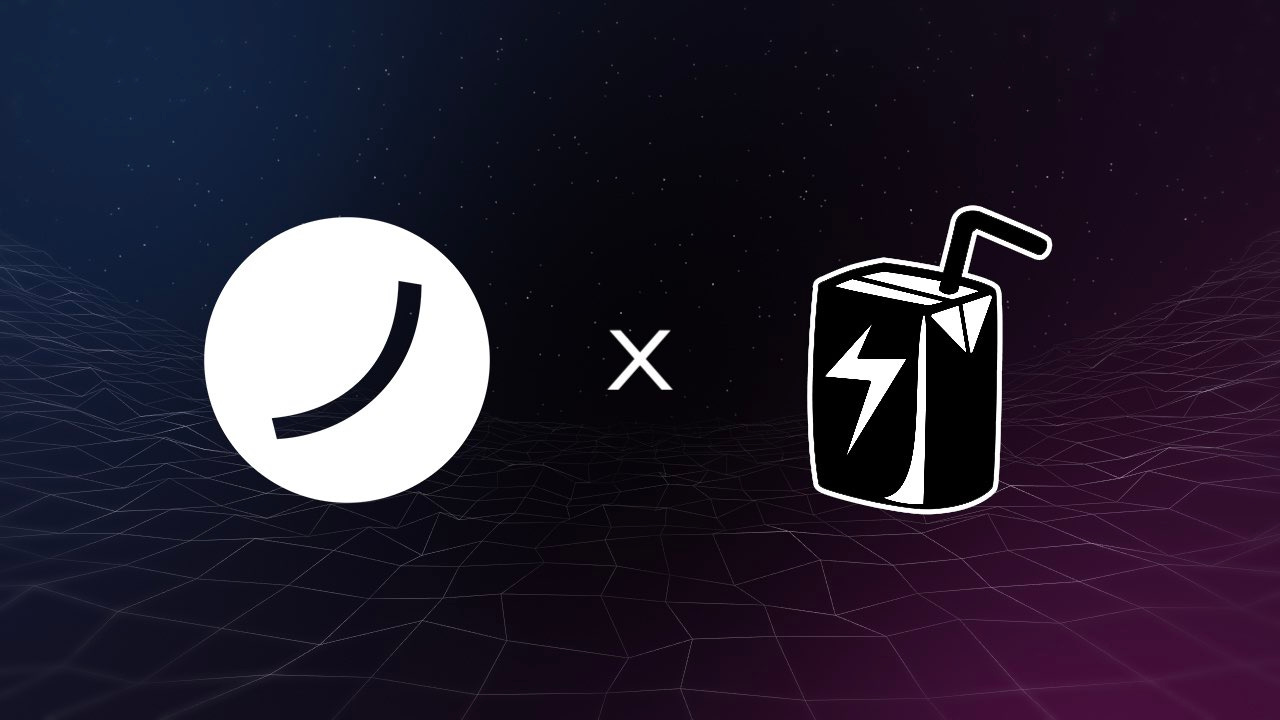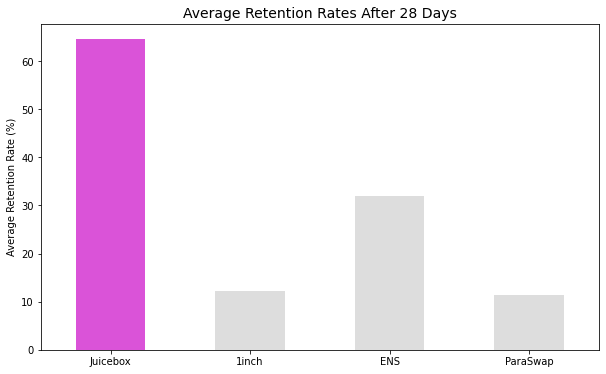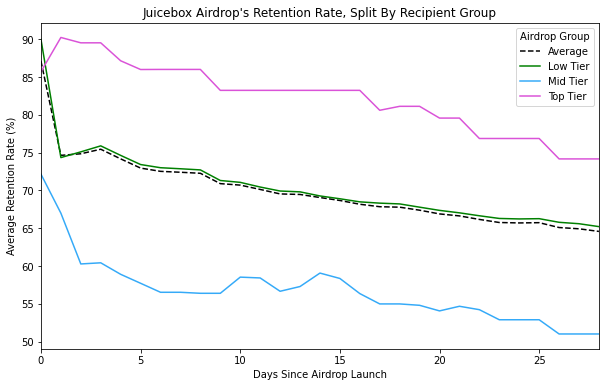Insights: JuiceboxDAO Airdrop by ARCx
The airdrop that was 200% - 600% more effective that the industry standard airdrops. Learn how ARCx custom scores powered higher retention rates.
TLDR: by using ARCx, JuiceboxDAO executed an airdrop that was retained by over 300% relative to industry standards.
Background
Juicebox's legitimacy as a DAO is built upon sufficient decentralization of power, access, and ownership. To accomplish this ideal, Juicebox must attract and retain an active community that has Juicebox's long-term interests in mind.
One of the most direct methods for improving decentralization is the airdrop. Several airdrop proposals were made to this effect in FC#15, all of which were rejected.
As part of a new airdrop proposal, ARCx crafted a Juicebox Benefits Score which identified Juicebox community members based on their token holding behaviour and governance participation. See JBP-114: Juicebox Benefits Airdrop
On March 5 2022, JBP-114 passed successfully and 40m JBX was distributed successfully. The blog post below outlines the effectiveness of the Airdrop through the use of ARCx custom scores that intelligently identify users through sophisticated data techniques.
After executing the airdrop we did a deep analysis of the data to better understand what happened on-chain and benchmarking it relative to some of the top airdrops in Web3 so far.
When executing the airdrop, ARCx segmented the JuiceboxDAO users based on their score which was weighted 60% based on Snapshot participation and 40% based on how long they held JBX (Juicebox’s native token). From there, we created three tiers of users (high, medium and low) and the number of tokens a user received was dependent on the tier they were in.
Definitions
In order to fully comprehend the findings, it helps to quickly define the terminology and used in our analysis. Most of these findings centralise around a concept called the "Retention Rate". The retention rate is defined as the lowest JBX balance for an address after the airdrop
To better understand this, let's use an example.
0x123 claims 100 JBX tokens from the airdrop. They then go on to sell 30 of their tokens immediately after claiming. This address then waits a week, and buys back the originally sold 30 tokens. In this scenario 0x123 would have a retention rate of 70%, even after buying back the tokens, as it is the greatest amount of tokens sold after the claim. This logic ensures that per address the retention rate can only go down over time.
The second concept to understand is the "Average Retention Rate". Many of these graphs aggregate the retention rates across all claimers in the airdrop. The average retention rate is defined as the average of all the retention rates for all addresses whom have claimed already. So, again using an example, if 10 addresses claimed the airdrop each day, then the average retention rate on day 1 would only consider the first 10 address and not any of the addresses who claimed on day 2, day 3, etc.
Findings
The first graph looks at the retention rates of 28 days of several major airdrops.The Juicebox Benefits Airdrop had unprecedented levels of holding relative to some of the best airdrops in the industry. We hypothesized that this was due to a more intelligent distribution scheme that took advantage of their on-chain and off-chain behaviour incorporated from the score design.
The second graph shown below shows the retention rate across different cohorts in the Juicebox airdrop. Top tier users had remarkably high retention rates as per our hypothesis although we found the mid tier users to have a surprisingly lower retention rate relative to the lower tier. An explanation for this might be due to the value of the airdrop for low tier users relative to the gas costs for claiming. In addition, mid tier users maybe active but more opportunistic where as top tier users are actually loyal to the protocol.
Closing
Token distribution events such as Web3 are a critical component of any community or DAO. The current method of giving them to all users without differentiating between those that are most valuable and those that aren’t lead to suboptimal outcomes for everyone except “airdrop hunters”.
The work we did with JuiceboxDAO is one of the more sophisticated ways of distributing tokens through a variety of factors and leads to objectively better outcomes as shown through the data above. In the future we intend to iterate on our airdrop capabilities to create even higher retention rates and outcomes for the communities we work with.
If you’re a DAO or team planning to do a token distribution, get in touch with us today so we can help you distribute your tokens more effectively.





